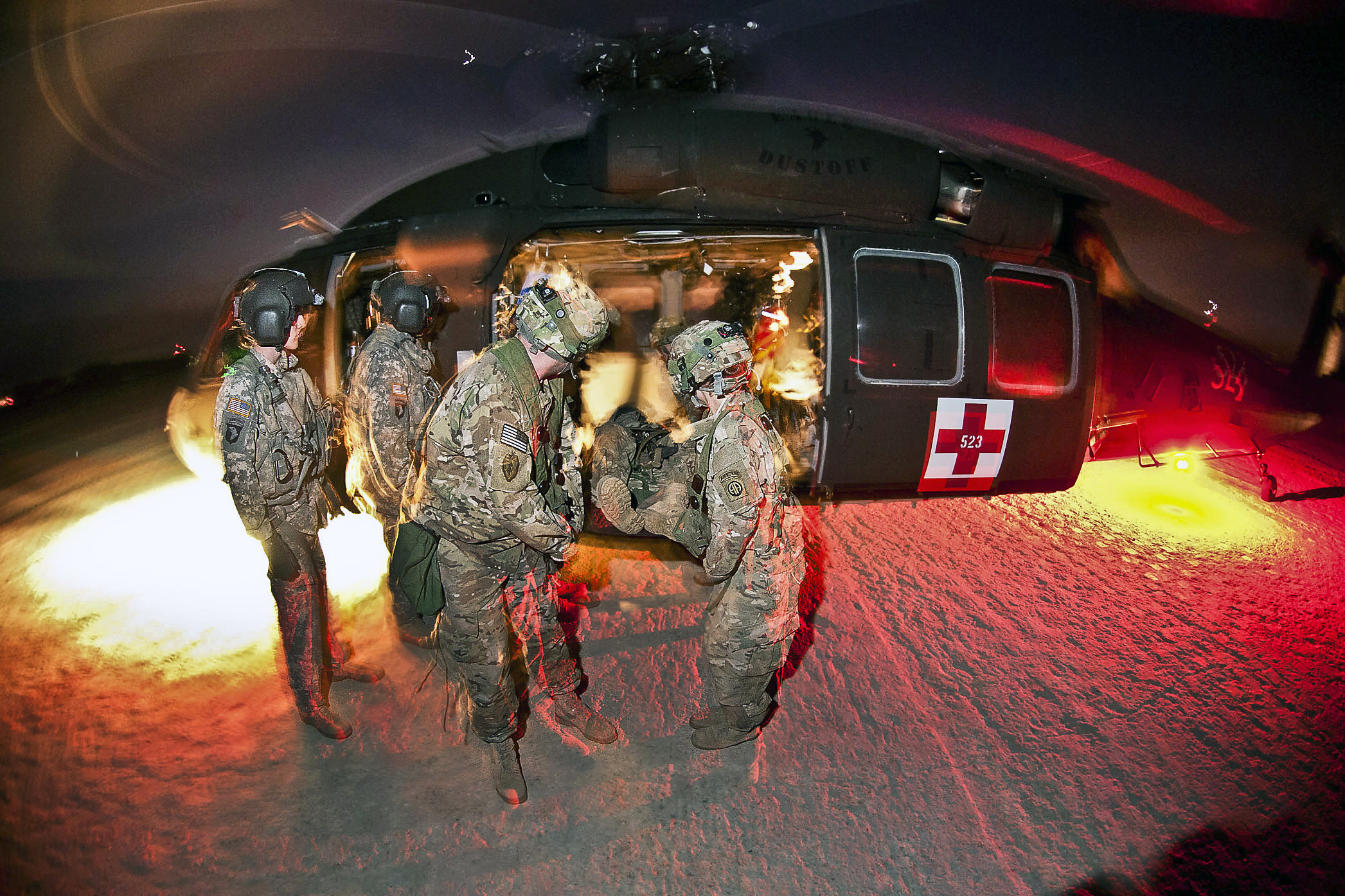
The Military Health System (MHS) is undergoing a major transformation. To support and advance federal healthcare, the Association of Military Surgeons of the United States (AMSUS) hosted a forum entitled “Over the Horizon: Military Health in 2020” to foster discussions around policy and strategy. Panel participants included former Undersecretary of the Army Nelson Ford; Acting Secretary of Defense for Health Affairs David Smith, M.D.; Defense Health Agency (DHA) Director Vice Admiral Raquel Bono, M.D.; Military Officers Association of America CEO Lt. General Dana Atkins, U.S. Air Force (Ret.), and Maj. General Richard Thomas, M.D., D.D.S., U.S. Army, (Ret.), president of the Uniformed Services University of the Health Sciences (USUHS).
The consensus was clear: The Military Health System of tomorrow will rely more upon partnerships and collaboration within its own system and other federal health agencies, as well as with the private sector. Some partnerships will look familiar through expansions of current programs; but other collaborative efforts will use industry best practices to change the way care is delivered. In strengthening collaboration and innovation, and sharing best practices, assets and resources between the private and public sectors, federal health care will be improved. Private and commercial sectors benefit as well through military medical research and training, and problem-solving things like cyber security requirements.
Collaboration is expected to run the gamut from training more military trauma teams in urban hospitals to putting the latest technology in the hands of patients and providers alike. These partnerships will help to:
- Protect wartime skills learned throughout the last 16 years;
- Improve patient-centered care for families and retirees; and
- Modernize healthcare delivery and innovation in both military and civilian systems.
In some ways, progress will be built upon existing program foundations. To maintain trauma skills, one major change will be for the military to concentrate more medical providers in military hospitals where they can treat military beneficiaries but also attract civilian trauma cases. In Texas, the San Antonio Military Medical Center has long treated civilians in its Level I trauma center. It is likely those kinds of programs will expand to other facilities, such as in Washington, D.C., Portsmouth, Va., Tacoma, Wash., San Diego, Calif., and possibly even Fort Bragg, N.C., and Jacksonville, Fla. The military already has trauma training agreements with some large, urban civilian hospitals that specialize in such care, including in Baltimore, Cincinnati and Miami. Expect those kinds of partnering agreements to expand to other locations as well.
The National Defense Authorization Act of 2017 (NDAA) provides many of the tools needed for this kind of greater collaboration. Indeed, NDAA is the turning point in what has been a series of initiatives and studies throughout the last five years that examine how best to preserve the medical lessons learned in the Global War on Terror. Its three main components include:
- Act as a single enterprise across the Military Health System;
- Improve patient-centeredness and access; and
- Maintain medical readiness.
Patients should be viewed as “disruptive innovators” and listened to so they can help shape the healthcare system. Patients expect MHS to leverage technology. Therefore, NDAA calls for tele-health initiatives for a number of uses from allowing patients to schedule appointments online, or secure messaging with their doctors, to being treated from a distance. Patients need access to information, and they need access to care. Some live near military hospitals and clinics, but those who do not would benefit from telemedicine.
However, MHS transformation faces challenges. Training for wartime trauma care does not always fit the civilian healthcare construct. Most surgeries in civilian hospitals are performed using minimally invasive laparoscopic techniques. War injuries, however, often require full open-belly operations to repair, and that training is harder to find. Also, corpsmen and medics, who one panelist called “the true heroes” of the last 15 years of war, have terrific lifesaving skills, but many are not credentialed to care for patients beyond federal healthcare settings. Military medical facilities will need to ensure they have the capacity and casework to maintain the skills of medics and corpsmen.
Military medical personnel often train on medical simulation models, but the Department of Defense needs industry’s help to drive improvements. Partnering with civilian organizations will require a greater degree of transparency and accountability. To succeed, defense health officials and partners need to understand what platforms can be shared and how to communicate across those platforms.
MHS isn’t the only winner in these collaborations; the private sector wins as well. The Uniformed Services University of the Health Sciences is the foundation of military medicine education. It provides the nation with a pipeline of military health professionals who stay beyond their service obligations. USUHS serves as the repository of lessons learned throughout more than 16 years of sustained combat and will use that knowledge to train the military’s future healthcare workers. But its work is felt beyond the military health system.
USUHS ranks in the top 25 percent of 650 research institutions nationwide. It is engaged in research ranging from prion disease to cancer and collaborates within its military centers of excellence as well as with leading civilian institutions like University of California, San Francisco. Researchers at the Armed Forces Radiobiology Research Institute are currently seeking partners in the pharmaceutical industry for three new drugs developed by the Institute. Moreover, USUHS offers curriculum to its doctors, nurses and dentists that other schools want to model: leadership courses.
Care protocols learned throughout the last 16 years of war can also benefit the civilian sector. Forty years ago when a soldier lost a limb, doctors thought the military healthcare system’s work was done when the scab fell off the point of amputation. Today, MHS has honed its wartime skills so they not only produce higher survival rates but also provide treatment for troops and their families that is highly advanced. Many severely injured troops either return to military duty or go on to live fulfilling, productive lives in a different line of work.
Military health partnering also gives private industry the benefits of lessons learned when adapting their products for military use. For example, when DHA was setting up its new electronic health record, MHS Genesis, it deliberately looked at off-the-shelf commercial products with proven track records and settled on one that was both scalable and flexible. They partnered with a commercial vendor, and together they took a very critical look at how MHS runs its healthcare system. Military health leaders were forced to challenge conventional thinking about how they deliver care – from how patients are admitted through emergency departments to how they are transferred from one floor to another or whether the patient even needed to come to a medical facility in the first place. And the commercial vendor had to meet the challenging demands of military cyber security requirements. In that process, both partners learned much about what the art of the possible might look like – for military health and for the commercial sector.
If military health can import commercial best practices into MHS, opportunities exist for private industry to develop significant strategic differentiators they can, in turn, offer their commercial customers. Development of MHS Genesis serves to underscore the value of how strengthening collaboration and innovation, and sharing best practices, resources and assets between private and public sectors help to improve federal healthcare and military-civilian interoperability.


